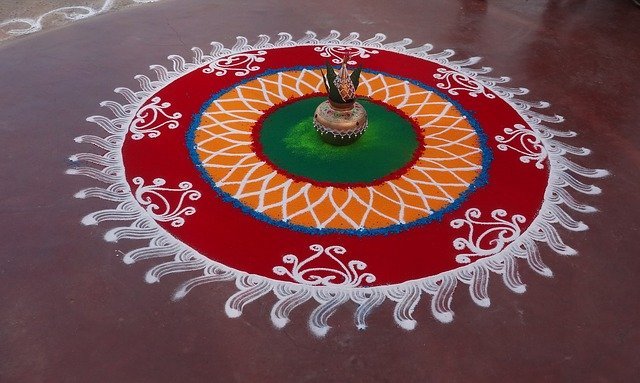Diwali is a very big festival in India. However colors also play very big role in Diwali. Houses are freshly painted and dazzling the home with some extraordinary Diwali decorations.
Colors are most noticeable though in the traditional rangoli patterns that increase the beauty of entrance of every home.

Rangoli is a traditional Indian art of decorating the entrance of your home's. It is known as ‘kolam’ in the south, and ‘alpona’ in West Bengal. In many cases, designs are passed down through generations with some of them being hundreds of years old.
The word 'rangoli' is said to have been derived from the words 'rang' and 'aavalli' which refers to a row of colors. These colorful designs are made using varied elements – from special rangoli powder or ground rice powder to flowers and even diyas on the occasion of Diwali.
Rangoli design is created at the entrance of the house, not only to welcome the guests that visit, but also the goddess herself.
A rangoli drawn during diwali usually follows a certain theme. The unity of man and nature can be shown by drawing natural elements like birds, fish, etc. Another common theme for a rangoli is a using symbols like the sun, moon, signs of the zodiac, etc.
Rangoli is also bordered by a lotus design, to represent the goddess Lakshmi. The lotus is also symbolic for the beginning of life.
A typical rangoli drawn in Andhra Pradesh, has an eight petal lotus which is formed by a variety of geometric patterns. This lotus is called 'ashtadal kamal'.
If you are planning to make one, here are some designs that you can take inspiration from.